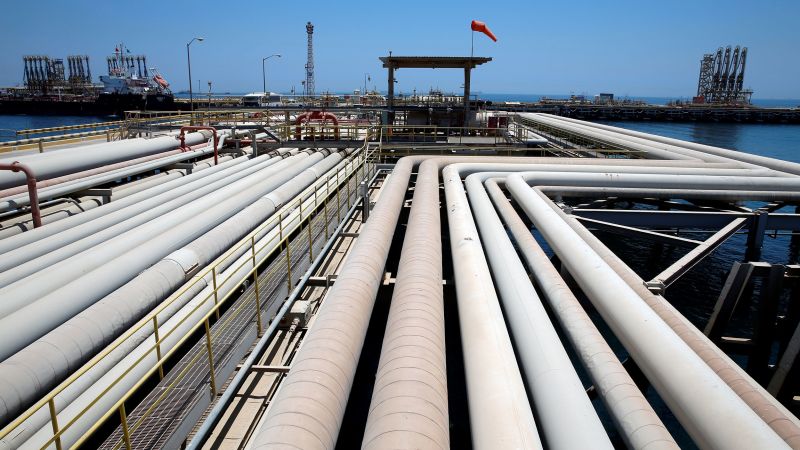The global price of oil reached its highest level in seven months on Tuesday, driven by concerns about potential disruptions in the Middle East that could impact supply. Brent crude, the international benchmark, rose to $89 a barrel, while West Texas Intermediate crude, the US benchmark, reached $85 a barrel. Both prices have increased significantly since the beginning of the year, with Brent rising 15% and WTI almost 19%. This surge in oil prices threatens to raise gasoline prices in the United States and other countries, impacting consumers and the overall economy.
Key factors contributing to the rise in oil prices include ongoing attacks in Ukraine, Houthi attacks on shipping in the Red Sea, and a general sense of instability in the Middle East. Additionally, a slower-than-expected recovery in US oil production following cold weather disruptions in January has contributed to a potential supply shortfall. Richard Bronze, from Energy Aspects, explained that these various factors have led to a situation where supply is falling short of demand, putting upward pressure on oil prices. Geopolitical tensions in the Middle East, including recent airstrikes on Iran’s embassy in Syria, have further exacerbated concerns about potential supply disruptions and contributed to the increase in oil prices.
The escalating tensions in the Middle East, particularly following the airstrike on Iran’s embassy in Syria, have raised concerns about a possible regional conflict that could disrupt oil supply to world markets. Iran and Syria have accused Israel of being behind the attack, with Tehran warning of a “serious response.” The situation is complicated by production cuts announced by OPEC+ countries, which are putting additional pressure on oil prices. The prospect of an escalation in the conflict between Israel and Hamas in Gaza adds to the uncertainty surrounding oil markets and the potential impact on supply chains.
Brent crude prices are approaching levels not seen since October, near $92.40 a barrel, which was reached shortly after an attack by Hamas militants in Gaza. Despite no significant disruptions to oil supply yet, markets are concerned that an escalation in the conflict could involve major oil-producing countries in the region. In addition to geopolitical tensions, there are signs of improving oil demand in China, with the country’s official purchasing managers’ index showing a return to expansion in the manufacturing sector after six months. This positive development in China’s economy could support oil prices in the near term and help offset some of the pressures coming from geopolitical uncertainties in the Middle East.
Overall, the combination of geopolitical tensions in the Middle East, production cuts by OPEC+, and concerns about potential supply disruptions have driven oil prices to their highest levels in months. The ongoing conflict between Israel and Hamas in Gaza, as well as the bombing of Iran’s embassy in Syria, have heightened fears of a broader regional conflict that could impact oil supply chains. While demand from China shows signs of improvement, there are lingering uncertainties about the stability of oil markets and the potential for further price increases. Consumers and economies that rely heavily on oil imports are likely to feel the impact of higher prices, posing challenges for policymakers and businesses around the world as they navigate the evolving energy landscape.


